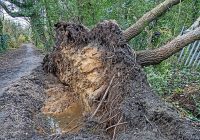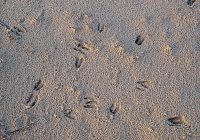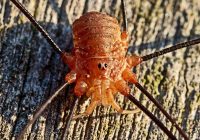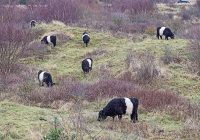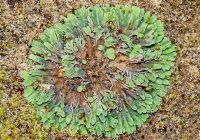Dr Phil Smith’s Wildlife Notes
December 2021
December is usually one of the wetter months of the year, as was the case this time with 15 rain-days. Storm ‘Barra’ on 7th-8th produced high winds and heavy showers but was nothing like as damaging as named storm ‘Arwen’ in November. The month was generally mild, the last few days exceptionally so. Thus ended 2021 which, according to the Met. Office, was slightly warmer and drier than average, though markedly dry in April, June and November. April was also exceptionally sunny but also cold at night while May was very wet. The autumn was one of the warmest on record.
A legacy of storm Arwen, I found several large toppled conifers on the Montagu Triangle, north of Freshfield Station. Most spectacular was a huge poplar blown down on the nearby bridleway, exposing a massive upturned root-plate.
As usual in December, the dunes were relatively quiet but Devil’s Hole produced evidence of my first Roe Deer there, with numerous footprints in the sand. In recent years, Roe Deer sightings have increased in the dunes but, being mainly active at night, the true status of this elusive species is unknown.
The sunny fence-line at Wicks Path, Formby Point, was enlivened by a bright orange harvestman that seems to be the common and widespread Leiobunum rotundum, while I also noticed a drab male Winter Moth. This is one of few moths active at this time of year, the females being wingless. There were still a few flowers left on the nearby strikingly blue garden-escape, Greater Periwinkle, as well as on the native White Deadnettle.
Reports of Snow Buntings at Southport led to three profitable visits during the month. Up to five of these attractive buntings were on the beach near the pier. They are much scarcer on the coast than they used to be, double-figure counts being a distant memory. The origin of our birds is unknown but ringing recoveries elsewhere suggest that most wintering Snow Buntings in Britain come from Iceland. I combined two of these trips with visits to Marshside, where the outer marsh, part of the Ribble Estuary National Nature Reserve, produced fine views of male and female/immature Hen Harrier. It is always a treat to see these much-persecuted raptors.
Bearing in mind the mild conditions, Sands Lake at Ainsdale attracted a surprising variety of waterfowl. On 29th, I counted 29 Gadwall, 9 Shoveler, 10 Tufted ducks, a Pochard and one Cormorant, as well as the usual Mallards. There was also a Buzzardperched in one of the island trees. Two days later, most of the Gadwall had gone but a small flock of Goldfinches in Alder trees included a welcome surprise – a Redpoll. These smart little finches used to be a regular sight along the coast but are now scarce. I walked north up the coast-road cycleway, soon reaching slack 10, with its three flame-red bushes of Don’s Willow. They have grown since I first recorded them in the late 1970s! With binoculars, I could see another possible bush on the far side of the slack. I will need Wellington Boots to get to it.
Trevor Davenport joined me on 21st at Ravenmeols Local Nature Reserve to see the spectacular work in progress, using heavy machinery, to clear enormous patches of invasive Sea Buckthorn from the National Trust dunes. There is plenty more to do but what a great start!
On 27th I enjoyed a walk on Ainsdale LNR to see the Belted Galloway cattle that are doing a splendid job keeping coarse vegetation under control. I counted 21 of them, scattered like giant humbugs across the dunes. Then, the bright-red stems of another bush of Don’s Willow attracted my attention from over 50m away. I confirmed its identity from the shape of dead leaves underneath the bush. That makes about 40 specimens of this great rarity on the Sefton Coast, with only four known elsewhere in Britain. I saw hardly any signs of the deep tracks made by machines used for scrub clearance last winter. Wind, rain and hooves have ironed them out.
Finally, a major botanical discovery held over from October was the distinctive Purple Crystalwort spotted by Natural England’s Natalie Hunt in a complex of pools and islands excavated by Hillside Golf Club the previous year. This rare and nationally declining liverwort is new to Sefton, its nearest localities being in Anglesey and South Cumbria. With permission, I joined Natalie and her colleague, Catherine Highfield, to investigate further. Not only did we count over 200 specimens of the crystalwort but we also listed about 100 higher plants on this superb wetland habitat. I can’t wait to return next summer.

